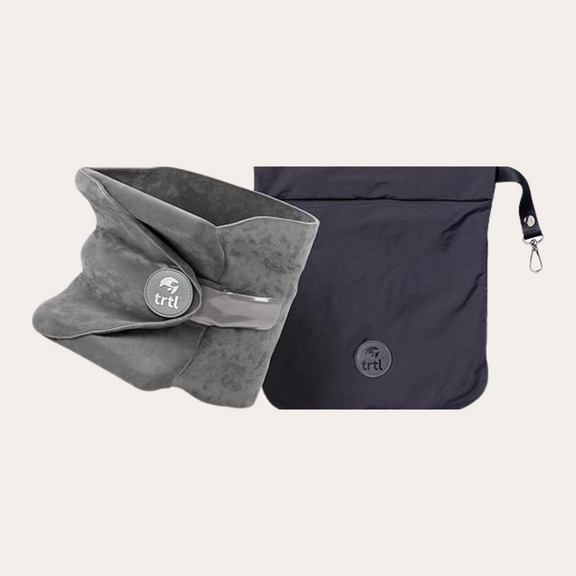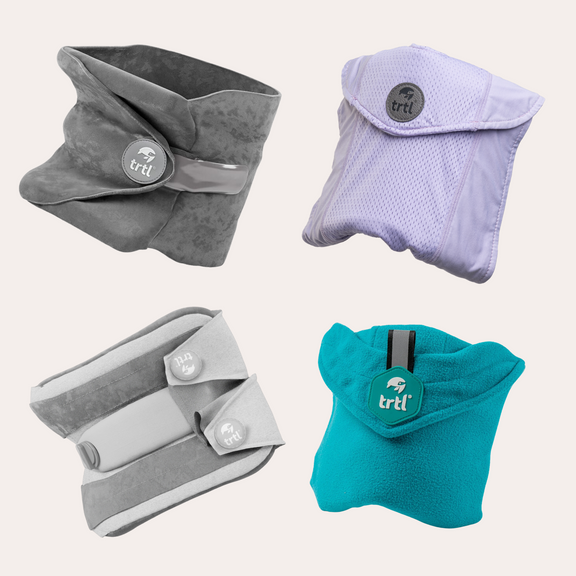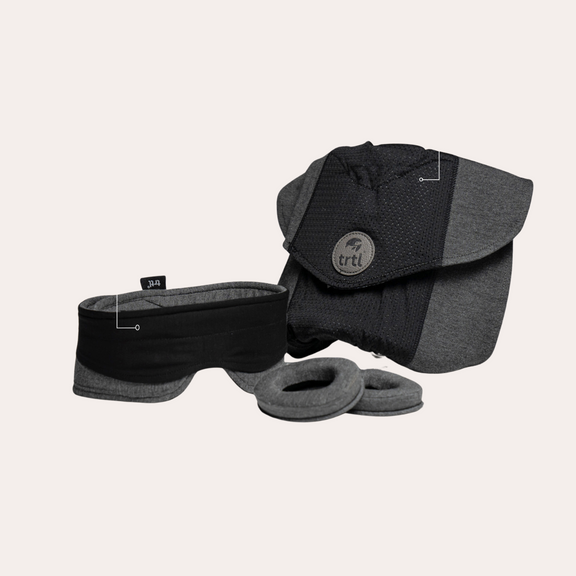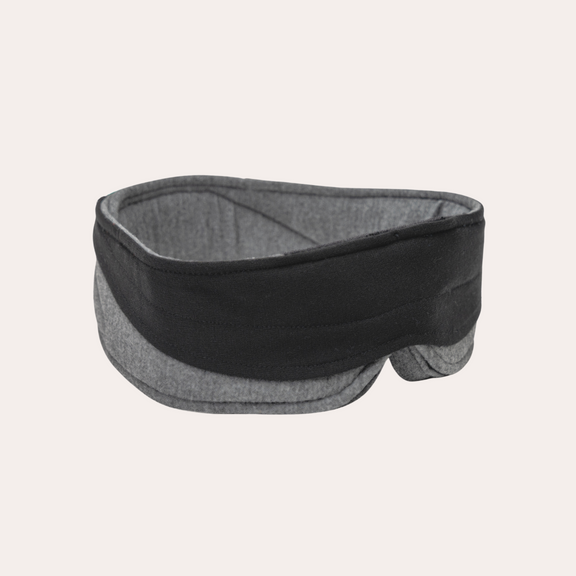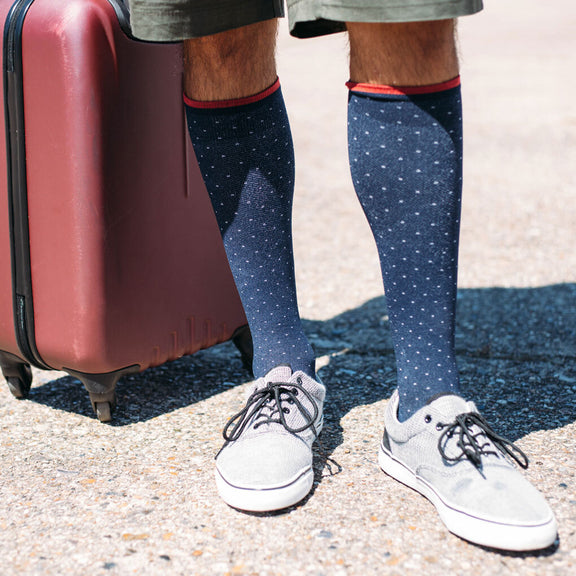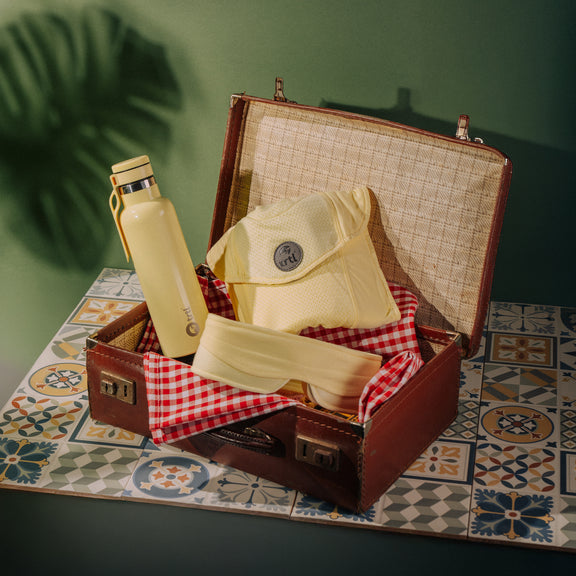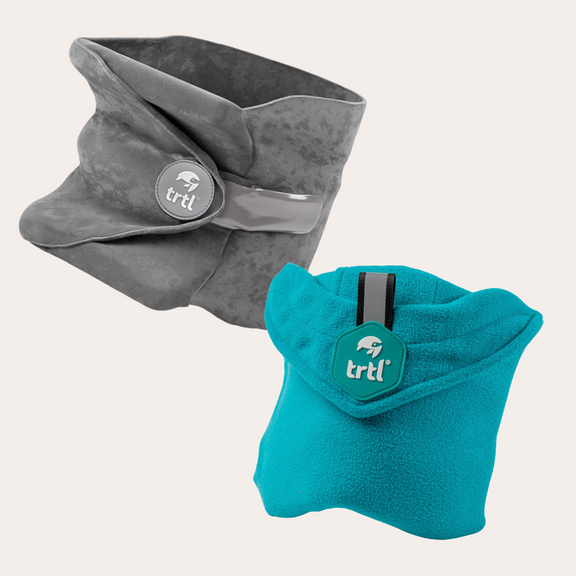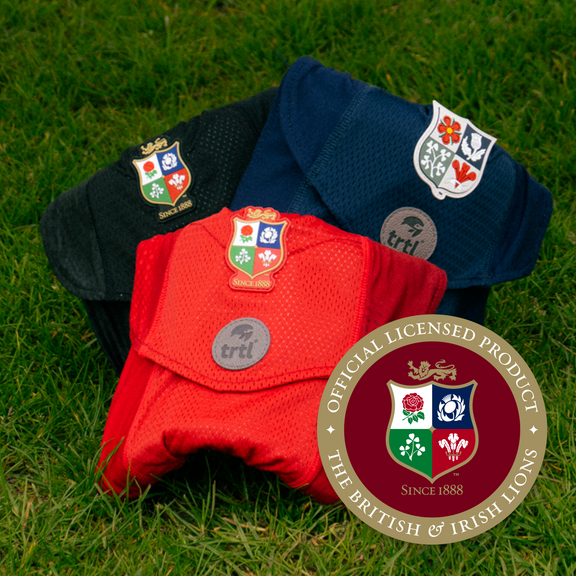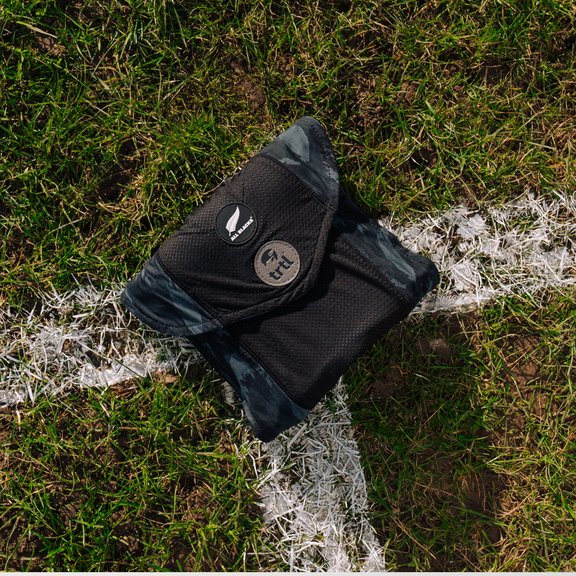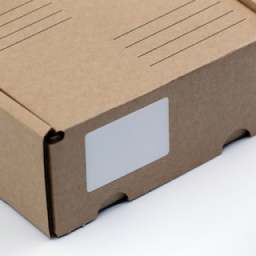Nov 09, 2023
What are Compression Socks? The Benefits of Wearing Flight Socks for Travel
By
Karin Svensson
We’ve all been there: sitting on a plane when you feel an ache in your legs or walking off once you’ve landed to find your feet and ankles swollen.
But what if there was an easy solution to prevent this painful pressure build-up and make sure you could walk with ease? Say hello to compression socks.
With this Trtl Travel guide, we’ll walk you through everything you need to know about compression socks, the benefits of wearing them and how to put them on easily.
What are compression socks?
Compression socks — also sometimes known as travel socks or stockings — are garments of various lengths and tightness that are designed to gently squeeze the leg to stimulate blood circulation in your calves and feet.
This compression also helps to promote blood flow to the heart, reducing the risk of blood clots, swelling and discomfort that’s associated with travel.
Are there different levels of compression in compression socks?
Compression socks can come in a wide variety of compression levels, with some levels dependent on specific medical conditions when you may need tighter or looser socks.
The most common compression levels are measured in millimetres of mercury (mmHg), and they include:
- Mild (8-15 mmHg) — These socks provide light compression and are often used for general leg comfort, preventing minor swelling and aiding in reducing leg fatigue. They’re more beneficial for people who spend a lot of time on their feet or who travel short distances.
- Moderate (15-20 mmHg) — This compression level is typically recommended for mild to moderate symptoms of conditions like swelling, leg discomfort and varicose veins. People also use them as a preventative measure during long flights, and our popular Trtl Compression Socks are an excellent addition for long flights.
- Firm (20-30 mmHg) — Firm compression socks are used for more significant conditions, such as severe varicose veins and deep vein thrombosis (DVT). Healthcare professionals usually prescribe these socks for specific medical conditions.
- Extra firm (30-40 mmHg) — Extra firm compression socks provide a high level of compression and are recommended for people who suffer from severe venous insufficiency, chronic swelling and lymphatic issues. They usually require a prescription.
- Prescription-strength (40 mmHg or higher) — Compression levels higher than 40 mmHg are considered prescription-strength and are used for conditions like advanced lymphedema or severe chronic venous insufficiency. These require a prescription and close monitoring by a healthcare professional.
What is the impact of long flights on the body?
When you’re on a long-haul flight, there’s a lot that can happen to your body, especially when you’re sitting for an extended period. It can make:
- Your legs feel heavy — When you’re sitting for long periods of time, blood can pool in your legs, making your legs feel like they’re almost made of lead. This can also lead to deep vein thrombosis, where blood clots can form. That’s why it’s best to make sure that you’re regularly walking around the cabin to get your blood pumping.
- Your feet and ankles swell — You may have noticed that when you walk off the aeroplane, your feet and ankles are swollen. Well, this happens because you’re not moving around, paired with the fact that gravity pulls the fluids in our body downwards when we’re in the sky. Compression socks are a great way to combat that, as well as staying hydrated.
- Your muscles become stiff — After hours of sitting, you might find your muscles feeling stiff and achy. Get up and do some exercises to get your body — and your circulatory system — moving!
- Your sleep schedule feels off — When crossing time zones, your internal body clock can go haywire — but that's jet lag for you! Try adjusting your sleep schedule before your flight and soak up some natural sunlight at your destination. It'll help you regulate the time zone faster. Find out more about avoiding jet lag with our guide.
What are the benefits of wearing compression socks for travelling?
Wearing compression socks can be of huge benefit to your health and your mental well-being.
1. Improved blood circulation
Compression socks work by applying gentle, graduated pressure, with the strongest compression at the ankle and gradually decreasing pressure as they move up the leg.
This design helps your veins work more efficiently, assisting blood flow from your feet and lower legs back up to your heart. By doing so, compression socks reduce the risk of blood pooling in your lower extremities, a common issue during extended periods of sitting.
2. Prevention of blood clots
Deep vein thrombosis (DVT) is a serious condition where clots form deep in the veins, often in the legs. It's a concern during long flights due to restricted movement while you’re flying. Compression socks help reduce the risk of DVT by ensuring that blood keeps flowing smoothly through your veins.
The graduated pressure they provide discourages blood from stagnating and clotting, offering you peace of mind while you travel.
3. Alleviation of leg fatigue
Have you ever noticed how your legs can feel heavy and fatigued after sitting for hours on a plane or a long car journey? Compression socks can help counteract this discomfort. By supporting your leg muscles and improving circulation, they reduce the build-up of lactic acid and metabolic waste products, making your legs feel less tired and refreshed.
4. Minimised discomfort
Whether it's cramps, aches, or general discomfort, compression socks provide continuous support and gentle pressure on your legs, helping to reduce the likelihood of muscle cramps and minimising leg discomfort.
When should you wear compression socks?
To fully maximise the benefits of compression socks, there are a few occasions where it's best to wear them:
- Before your journey — You can start wearing compression socks before your trip, especially if you anticipate a long flight or extended periods of sitting during travel preparations. This can help pre-emptively reduce leg fatigue and swelling, making you feel more comfortable as you embark on your journey.
- During your journey —- The primary purpose of compression socks is to support your legs during travel, so wearing them during your journey is essential. Put them on before you board your flight, train, or bus, and keep them on throughout the journey. This will help maintain healthy blood circulation, reduce the risk of blood clots, and alleviate discomfort.
- Transits and layovers — Even during layovers and transit stops, it's a good idea to keep your compression socks on. These periods often involve more sitting and waiting, and wearing the socks continuously ensures consistent compression and benefits for your legs.
- After your journey — Don't forget to wear your compression socks after you've reached your destination, especially if you have further travel planned or if you've been on a long-haul flight. Wearing them during your stay can help your legs recover from the strain of travel and prevent swelling or discomfort during your trip.
- On long-haul flights — For long-haul flights in particular, compression socks are really recommended. Since these flights are usually over 7 hours, they typically involve extended sitting, which increases the risk of blood clots and discomfort in your legs. Wearing compression socks throughout the flight can significantly improve your comfort and reduce the risk of travel-related health issues.
How do you put on compression socks?
Putting on compression socks can be a little tricky, but following the right steps can make it easier and more effective. Here’s a step-by-step:
- Gather your suppliers — First, you’ll want to start by getting all your supplies together and finding a comfortable place to sit.
- Prepare your legs — Ensure that your legs are clean and dry before you begin — it’ll make it harder to pull them up your legs, and it’ll pull on your skin if it's wet or damp.
- Turn the sock inside out — To make it easier to put the compression sock on, turn it inside. However, make sure the heel portion is still in the right place.
- Insert your hand and position your foot — Insert your hand into the sock, grabbing the heel position. Hold onto the heel while keeping the sock inside out, and position the foot section to align with your foot.
- Pull the sock onto your foot — Gently start pulling the sock over your toes and foot. Be sure not to scrunch or fold the sock as you do this; you want it to remain smooth.
- Smooth out any wrinkles — Once the sock is on your foot, check for any wrinkles or bunching. Use your fingers to smooth out any unevenness, especially around the heel and ankle area. If you don’t, you could cause more harm than good.
- Pull up your leg — Slowly and gradually pull the sock up your leg, making sure it fits snuggly and comfortably. Be patient and take your time.
- Adjust the top band — Once the sock is all the way up, adjust the top band to your preferred level. It should sit just below the knee or as prescribed by a medical professional. Make sure it’s not too tight, as this can restrict blood flow.
Who should wear compression socks?
Compression socks aren’t just for people who travel! They can actually help a wide range of people — from athletes to pregnant women and more.
- Frequent flyers — People who travel long distances by air, bus, or train may be at risk of developing deep vein thrombosis (DVT) due to prolonged periods of sitting. Compression socks can reduce the risk of DVT and help with leg comfort during travel.
- Pregnant women — Pregnant women often experience leg swelling and increased discomfort because of the intense pressure on their veins. Compression socks can help relieve these symptoms and encourage better circulation.
- Post-surgery or injury — Compression socks may be prescribed by healthcare professionals after surgery or injury to aid in the healing process and reduce swelling.
- People with lymphedema — Lymphedema is a condition characterised by the buildup of lymphatic fluid, often in the arms or legs. Compression garments, including socks, can help manage this condition by promoting lymphatic drainage.
- Athletes — Some athletes use compression socks during training and recovery to enhance blood flow, reduce muscle soreness, and improve overall performance. They’re commonly worn by runners, cyclists, and triathletes.
Travel the right way with Trtl Travel
When it comes to compression socks, we’ve got you covered.
It’s also important that you remain in complete comfort wherever you are, and that’s why our travel pillows will leave you feeling refreshed at your destination, whether it’s a quick trip of a few hours or a long-haul flight.
To find out more helpful tips and tricks for all things flying, check out our blog page.


